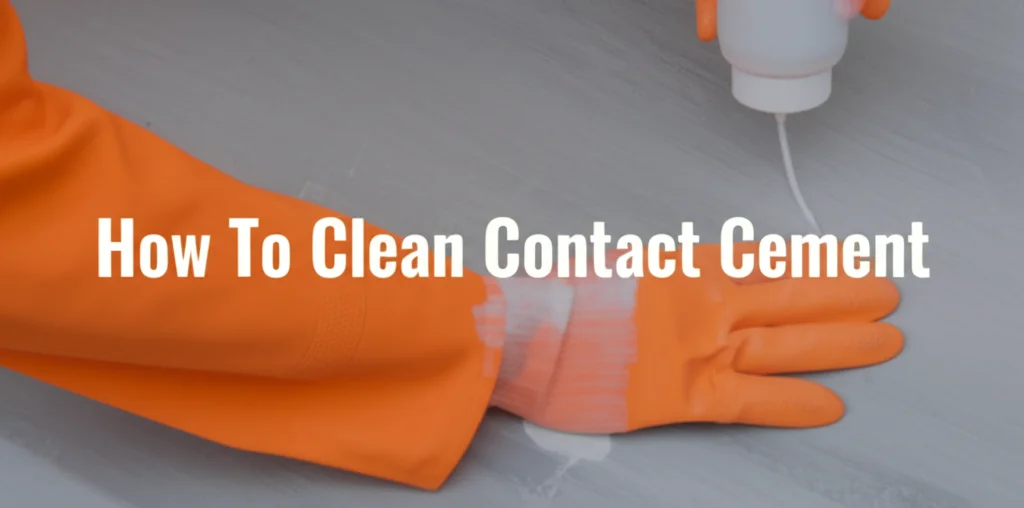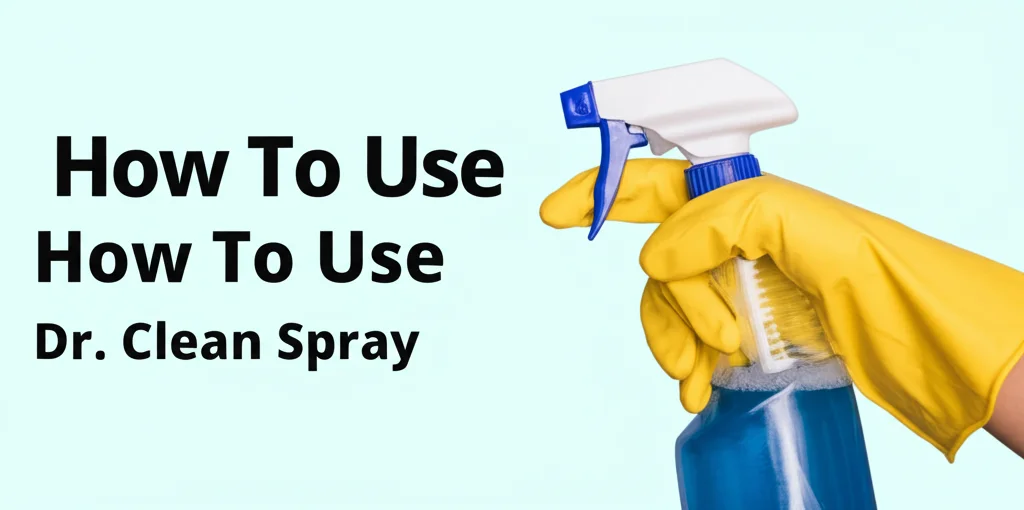· Cleaning Guides · 7 min read
How To Clean Contact Cement

Tackling the Sticky Situation: How to Clean Contact Cement
Ever worked with contact cement and ended up with a frustrating, sticky mess? You’re not alone! Contact cement, while incredibly strong and useful for bonding various materials, can be a real pain to clean up. This article will guide you through the process of removing contact cement residue from different surfaces, offering practical solutions and helpful tips. We’ll cover everything from the best solvents to use, to safety precautions, and even preventative measures to avoid the mess in the first place. Let’s dive into how to effectively clean contact cement and restore your surfaces.
Takeaway:
- Act quickly – fresh cement is easier to remove.
- Test solvents in an inconspicuous area first.
- Ventilate the area well when using solvents.
- Use gentle scrubbing to avoid damaging surfaces.
- Safety first – wear gloves and eye protection.
Quick Answer:
Cleaning contact cement typically involves softening the adhesive with a solvent like acetone, mineral spirits, or specialized adhesive removers, then gently scraping or wiping away the residue. Always test the solvent on a hidden area first to ensure it doesn’t damage the surface.
Understanding Contact Cement and Its Challenges
Contact cement is a powerful adhesive known for its instant bonding capabilities. Unlike many glues, it doesn’t require clamping; applying pressure creates an immediate, strong hold. This makes it ideal for projects like laminating countertops, applying veneers, and working with leather. However, this same strength makes it difficult to remove once it’s dried.
The key challenge with contact cement is its resistance to water. Traditional cleaning methods often prove ineffective, as water simply won’t break down the adhesive. Therefore, you need to employ solvents specifically designed to dissolve the cement’s polymers. Different surfaces require different approaches, so understanding the material you’re cleaning is crucial. For example, what works on metal might damage plastic or fabric. Choosing the right solvent and technique will save you time, effort, and potential damage.
Choosing the Right Solvent for Contact Cement Removal
Selecting the appropriate solvent is the most important step in cleaning contact cement. Here’s a breakdown of common options and their best uses:
- Acetone: This is often the first choice for many, as it’s a strong solvent readily available in most hardware stores. Acetone works well on metal, glass, and some plastics, but always test it on plastic first, as it can melt or discolor certain types.
- Mineral Spirits: A milder solvent than acetone, mineral spirits are a good option for painted surfaces or materials sensitive to acetone. It’s effective but may require more applications and longer soaking times.
- Contact Cement Remover: Specifically formulated for this purpose, these removers are often the safest and most effective option, especially for delicate surfaces. They are available at hardware and home improvement stores.
- Citrus-Based Solvents: These are environmentally friendly alternatives that can work on some contact cement residues. They are less aggressive than acetone or mineral spirits, so they may require more effort.
Important Note: Always read the solvent’s label and follow the manufacturer’s instructions. Proper ventilation is essential when working with any solvent.
Removing Contact Cement from Hard Surfaces: Metal, Glass, and Tile
Hard surfaces like metal, glass, and tile are generally more forgiving when it comes to cleaning contact cement. Here’s a step-by-step guide:
- Preparation: Protect your work area with drop cloths or newspaper. Wear gloves and eye protection.
- Solvent Application: Apply your chosen solvent (acetone, mineral spirits, or contact cement remover) to a clean cloth.
- Soaking: Saturate the contact cement residue with the solvent and let it sit for 5-10 minutes to soften the adhesive.
- Scraping: Gently scrape away the softened cement with a plastic scraper or putty knife. Avoid using metal tools, as they can scratch the surface.
- Wiping: Wipe away the remaining residue with a clean cloth dampened with the solvent.
- Cleaning: Finally, clean the surface with a mild detergent and water to remove any remaining solvent residue.
For stubborn residue, you may need to repeat the process several times. If you’re dealing with a large area, work in small sections to prevent the solvent from drying out. Consider using a heat gun on a low setting to gently warm the adhesive before applying the solvent, which can help soften it. You can find more information on floor cleaning at https://www.beacleaner.com/how-to-clean-luxury-vinyl-plank-flooring/.
Cleaning Contact Cement from Fabrics and Upholstery
Removing contact cement from fabrics and upholstery requires a more delicate approach. Here’s how to tackle this challenge:
- Testing: Crucially, test the solvent on an inconspicuous area of the fabric to ensure it doesn’t cause discoloration or damage.
- Solvent Application: Apply a small amount of solvent (mineral spirits or a specialized fabric adhesive remover) to a clean cloth.
- Blotting: Gently blot the contact cement residue, working from the outside in to prevent spreading. Do not rub, as this can push the adhesive deeper into the fibers.
- Repeat: Repeat the blotting process with a clean section of the cloth until the residue is removed.
- Cleaning: Once the cement is removed, clean the area with a mild detergent and water.
- Drying: Allow the fabric to air dry completely.
For delicate fabrics like silk or velvet, it’s best to consult a professional upholstery cleaner. Avoid using acetone on fabrics, as it can dissolve many synthetic fibers. If the cement has deeply penetrated the fabric, you may need to use a specialized enzyme cleaner designed to break down adhesives.
Dealing with Contact Cement on Skin
Accidental contact with skin is common when working with contact cement. Here’s how to safely remove it:
- Avoid Harsh Solvents: Do not use acetone or mineral spirits directly on your skin, as they can cause irritation and dryness.
- Oil-Based Remover: Use a vegetable oil, baby oil, or a specialized adhesive remover designed for skin.
- Gentle Rubbing: Gently rub the oil onto the affected area to loosen the adhesive.
- Washing: Wash your hands thoroughly with soap and water.
- Moisturize: Apply a moisturizer to rehydrate your skin.
If you experience any skin irritation, consult a doctor. Prevention is key – always wear gloves when working with contact cement.
Preventing Contact Cement Messes: Tips and Tricks
Preventing a mess is always easier than cleaning one up. Here are some tips to minimize contact cement mishaps:
- Work in a Well-Ventilated Area: This is crucial for both safety and preventing fumes from affecting your work.
- Use Drop Cloths: Protect your work surface with drop cloths or newspaper.
- Apply Cement Carefully: Apply the cement evenly and avoid over-application.
- Clean Up Spills Immediately: Wipe up any spills or drips as soon as they happen.
- Store Cement Properly: Keep the container tightly sealed when not in use.
- Consider Alternatives: For some projects, consider using less aggressive adhesives.
By following these preventative measures, you can significantly reduce the chances of encountering a sticky situation. Remember, proper preparation and careful application are the best defenses against contact cement messes. If you’re looking for more cleaning advice, check out https://www.beacleaner.com/how-to-remove-baking-soda-residue-from-carpet/.
Frequently Asked Questions (FAQ)
Q: Can I use rubbing alcohol to remove contact cement?
A: Rubbing alcohol is generally not strong enough to dissolve contact cement effectively. While it might loosen some fresh residue, it won’t tackle dried or stubborn adhesive. Stronger solvents like acetone or mineral spirits are typically required.
Q: Will vinegar remove contact cement?
A: Vinegar is unlikely to remove contact cement. It’s a mild acid and doesn’t have the solvent properties needed to break down the adhesive’s polymers.
Q: How do I remove contact cement from wood?
A: Start with mineral spirits and gentle scraping. If that doesn’t work, carefully try acetone, testing in an inconspicuous area first to ensure it doesn’t damage the wood finish.
Q: Is contact cement remover safe for all surfaces?
A: No, not all contact cement removers are safe for all surfaces. Always read the product label and test it in an inconspicuous area before applying it to the entire surface.
Q: What’s the best way to dispose of rags used with solvents?
A: Rags soaked in solvents can be a fire hazard. Lay them flat to dry completely outdoors, then dispose of them properly according to local regulations.
Conclusion: Mastering Contact Cement Cleanup
Cleaning contact cement can be challenging, but with the right tools and techniques, it’s definitely manageable. Remember to prioritize safety by wearing gloves and eye protection, and always work in a well-ventilated area. Choosing the appropriate solvent for the surface you’re cleaning is crucial, and testing it in an inconspicuous area first is always a good idea. By following the steps outlined in this guide, you can effectively remove contact cement residue and restore your surfaces to their original condition. Don’t let a sticky situation ruin your project – take control and clean it up! For more cleaning solutions, explore our guide on https://www.beacleaner.com/how-to-clean-floor-grout-without-scrubbing/.




